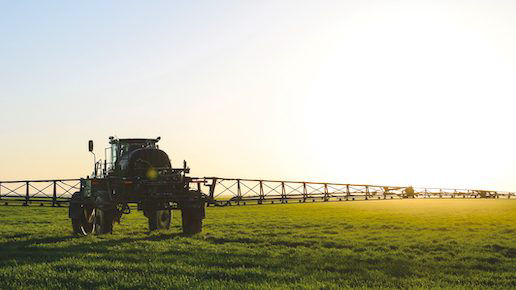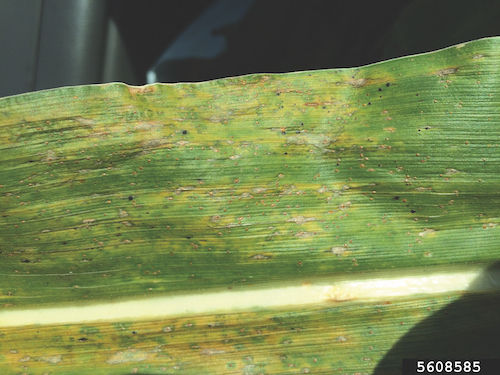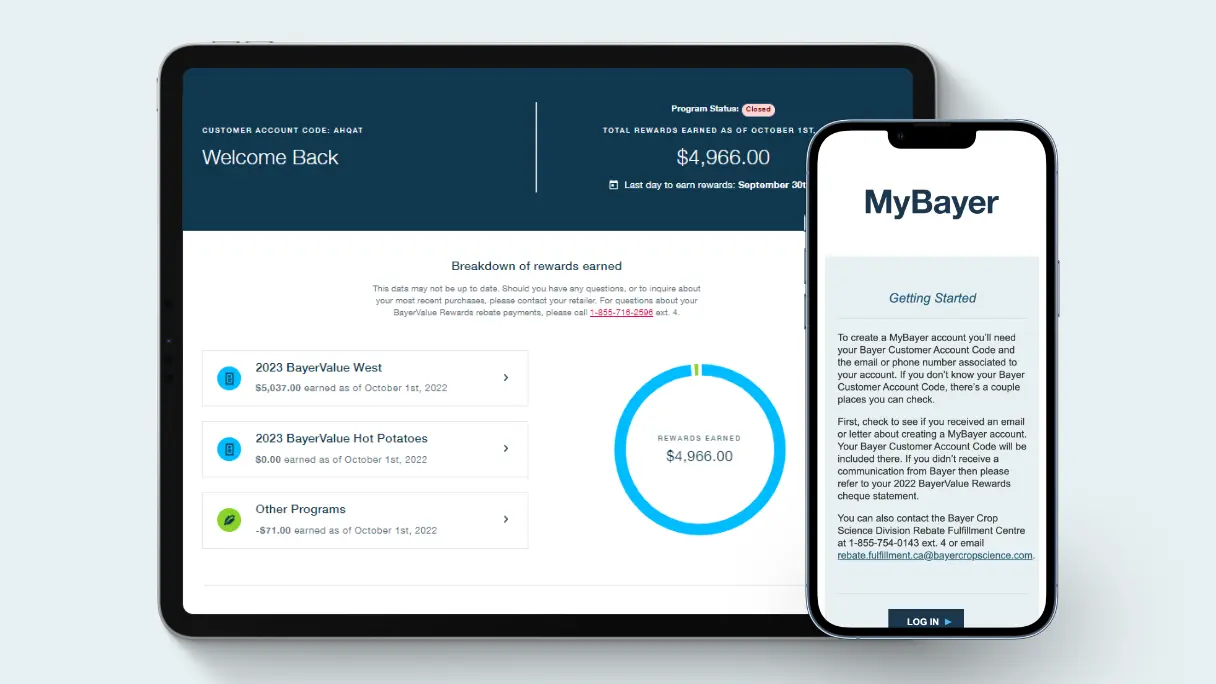6 READ-TIME
The fine art of foliar fungicide timing
July 25, 2023
By Jennifer Barber
Across Canada, growers are applying more fungicide than they did 15 years ago, and they’ve gotten better at it with the help of improved equipment, products and best practices. But as disease profiles shift along with climate conditions, growers need to continually think about the best time to apply a fungicide to get optimal disease control.

“I would say in most cases, farmers are getting things right when it comes to fungicide timing, but there are some areas for improvement,” says Deb Campbell, agronomist and owner of Agronomy Advantage in Dundalk, ON. “Sometimes the logistics of farming — be that equipment use, manpower or the weather — trumps ideal window timing and while most have the intent of hitting that ideal timing, there can be some significant challenges along the way.”
Growers are used to changing their plans on any given day because conditions change, and they’re willing to do so because of the positive impact a fungicide application may have on their bottom line, says Campbell. “Disease control timing can be a tough decision to make, and sometimes it means making multiple passes if you can’t hit everything at the optimal time.”

“From a producer’s perspective, you have to combine the goals for disease protection with convenience when it comes to a fungicide application,” says Kelly Turkington, plant pathologist with Agriculture and Agri-Food Canada in Lacombe, AB. “Depending on the crop (farmers) are working with, timing may vary. But once they have determined whether there is a significant risk present, how they approach that disease can have a significant impact on their crop.”
Climate change shifts timing in Eastern Canada
Shifting climate has meant altering the approach to in-season disease control in Ontario, says Campbell. For instance, over time the seasons have become warmer earlier, resulting in slight changes in flowering timing so growers have had to make the appropriate adjustments to fungicide timing.
“Fungicide management has become commonplace when there is the potential for high impact on high value crops,” says Campbell. “For those crops growers generally take a proactive approach to disease because the potential for financial loss from damage to the value of the crop if disease hits is just too risky.”
Tar spot, a newer disease for Ontario corn growers, has moved up from the U.S. over the past three years. “We are still working to understand the best strategy on when to manage tar spot as it can be hard to predict when it’s going to hit and what are normal tolerance levels,” she says.
Researchers are working to determine if a second spray for tar spot is necessary under certain circumstances. “As far as optimum timing under moderate pressure, that window of VT to R1 is best,” says Campbell. “Under heavy tar spot pressure or early infection, there may be a benefit to two applications. That has yet to be determined for Ontario.”
But, Campbell thinks that equipment may be the biggest challenge. Corn is already quite tall from VT to R1 and currently, only a small percentage of Ontario corn is sprayed in that window, mainly due to capacity issues, she says. Because tar spot spreads so quickly, the imperative to get it under control adds more pressure to that situation.
“Managing the spread (of tar spot) is also critical because fungicide timing could occur when the crop is tall enough that a high clearance sprayer or aerial application of a fungicide would be needed. There are not enough of either of those in the province to protect a corn crop if tar spot were to become widespread.”
She says with other disease, such as fusarium head blight in cereals, farmers are more likely to watch for high-risk weather conditions relative to flower timing. But then, the window can close up quickly. “Say you have a seven- or eight-day spray window, and the ideal (application) time is day two or three,” she says. “Other issues come up and suddenly it is day six. At that point growers need to look at the value of the crop, the weather, speak with their reps and decide what kind of benefit they can get from an application at that point.”
Scouting: still the best timing tool on the Prairies
Turkington says that many cereal growers are under the impression that the current fungicide actives will kill the disease pathogens if they just get the timing right. “That is simply not the case, especially for the leaf spots, because any plant tissues not visible yet are totally unprotected,” he says. “If used correctly, (fungicides) will at best suppress disease, so a foliar fungicide is one tool that we use together with rotation, varietal selection and seed treatments to manage disease.”
When it comes to cereals, timing often depends on disease pressure, as a fungicide must be applied to the plant tissue farmers want to protect, he says. If there is a lot of leaf disease present early in the season, an early application may be considered but that will leave the flag and penultimate leaves at risk, meaning the crop may require a second application around flag leaf emergence, and perhaps even a third if fusarium head blight is also a concern.
“Scouting is always important when it comes to fungicide timing,” says Turkington. “You need to start looking at the upper to lower canopy leaves for initial signs of disease. If everything looks good, generally it’s better to hold off until after head emergence if weather conditions allow it. Then a single application may be all that is necessary. If you have significant signs of leaf spots or rusts around tillering to stem elongation, then a flag leaf stage or slightly earlier application is needed. Delaying until after head emergence can reduce the level of control.”
When it comes to canola and sclerotinia management, growers must make the call before they see symptoms based more on their local disease conditions in previous seasons, crop rotation and weather.
“The timing varies dramatically based on inoculum load and the weather coming into and during flowering,” says Turkington. “Weather conditions in June can impact the potential for spore production as the crop starts to flower making it difficult to assess total risk versus the cost of an application. But if you wait too long, the damage is already done. Managing for sclerotinia is a stressful decision to make and it quickly becomes an economic decision, while the level of risk aversion a producer has can also play a role.”
Campbell says if she could offer one piece of advice to growers when it comes to their foliar fungicide timing, it is just to be prepared. “Have the product in your shed well in advance,” she days. “For example, in 2022 wheat heading and flowering happened five days earlier than normal and the conditions were right for disease across several crops. If you have your product and your nozzles ready you can time your application for when your crop needs it.”
